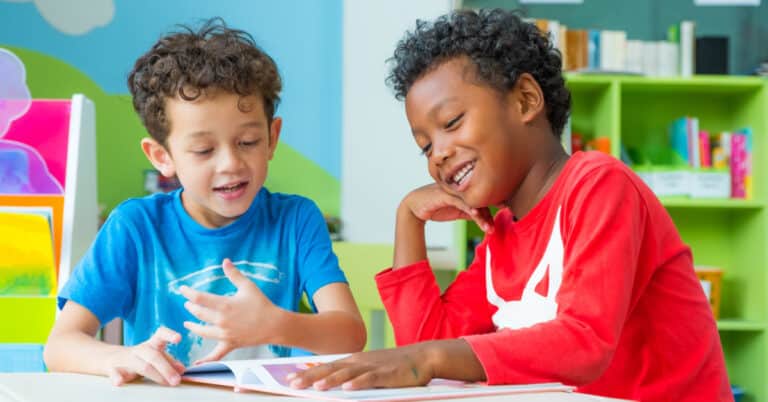The transition to digital learning during the pandemic further dismantled an already fragile education system. Resources that would adequately equip students to thrive in the digital world were scarce, especially for our neediest students. Educators were forced to forge ahead and foster meaningful relationships with students and families, while completely rebuilding our education system.
Schools had to scramble to develop plans that would address the need of students during the pandemic, ongoing racial violence and a divisive election. Attendance rates for students dropped, work production decreased and students that did attend class often had their cameras off.
Many students were not engaged.
Despite efforts to create incentives, increase outreach and gather information, the one factor I think offers a clear path to rebuilding an equitable education system is our ability to build meaningful relationships with students that create a deep sense of belonging.
To build these relationships and experiences of belonging, we at the Springfield Renaissance School began by gathering feedback from our families. We did this because we believed that strengthening our relationships with our families would build a critical foundation of trust as we navigated the pandemic together. Our administrators held monthly town hall meetings via Zoom and asked parents for their input. The leadership team worked with teacher leaders to develop a family survey. Parents became our co-teachers, and we needed them more than ever. We also needed students to share their input and supply feedback on what education could look like given our new learning landscape. The theme in all the information we gathered was belongingness. We asked again and again: What does it mean to be seen, heard and valued during online learning?
The answers we received showed us that we needed to focus on leveraging student voice, deepening student ownership of learning and monitoring progress towards mastery. In order to do so in a virtual environment, educators and school leaders came together to create three tools to tackle the very real challenge of authentic online engagement and belonging. These are some of the solutions we generated.
Instructional checklist to help educators monitor student progress
The first tool we created was the instructional checklist, which focused on research-proven techniques that would increase academic rigor during online learning. Every element of the instructional checklist monitored teacher moves that could be counted on to increase student belonging, leverage student voice and increase student ownership. The tool provided clarity for teachers in what they needed to do, helped to shift instructional decision-making and provided a clear measure for administrators when working to support teachers with their personalized professional development.
The tool provided:
- Explicit instructional moves that help monitor student progress toward mastery of state standards
- Attention to leveraging the personal needs of students
- Evaluation and progress monitoring during informal classroom observations to track school-wide progress
Habits of work to focus on participation, collaboration and self-direction
The second tool we created was a habits of work document. This tool was created by teacher leaders to measure what many in education call “soft skills.” Habits of work are a set of indicators that measure student progress and focus on students coming to Zoom on time, actively and collaboratively participating in class, assessing and revising independent assignments and becoming self-directed learners.
The tool provided:
- Daily information on students’ habits with time for corrections
- The opportunity for teachers to provide feedback to students using a rubric that is designed to monitor student progress towards self-direction and ownership
- The ability for students to reflect on their own learning and offer insights on what factors contribute to their success and growth
Self-portrait assignment to build time for reflection and celebration
The third tool we created was a self-portrait assignment. Based on the feedback we received from parents, students and teachers, we knew it would be important to go beyond creating an academic setting. Students needed to feel valued and appreciated and to be co-facilitators of their own learning. At the start of the school year, we launched a school-wide self-portrait assignment. We set out to intentionally create a space in our day for students to reflect and share their thoughts about the pandemic and how it affected them. We provided teachers with tools to lead conversations and gave students a platform to amplify their voices. Student portraits were shared during an all-school assembly where students were able to celebrate the hard work of their peers.
The assignment provided:
- Space in the day for students to reflect about how the pandemic has affected them
- Tools for teachers to lead conversations
- The opportunity to have an all-school assembly celebrating student work
How the tools came together to improve student engagement
All three tools created a deep sense of belonging and allowed for students and families to feel like partners in education. Each tool we created during remote learning was inclusive of strategies to leverage our students and their belongingness. For us–being seen and understood was critical for our students.
The instructional checklist and the habits of work rubric were used to promote a deeper sense of student ownership in instruction. The self-portrait gave space for students to be seen. Every move we made was with the sole intent of reimagining education with students at the center and creating opportunities to build meaningful relationships and enhance student belongingness.
The closure disrupted the place where traditional schooling took place, but it did not stop learning from happening. The interconnected relationships built during the closure with students, families and teachers allowed for authentic learning and deeper relationships to form.
Guest post by Arria Coburn, principal of The Springfield Renaissance School located in Springfield, Massachusetts.

